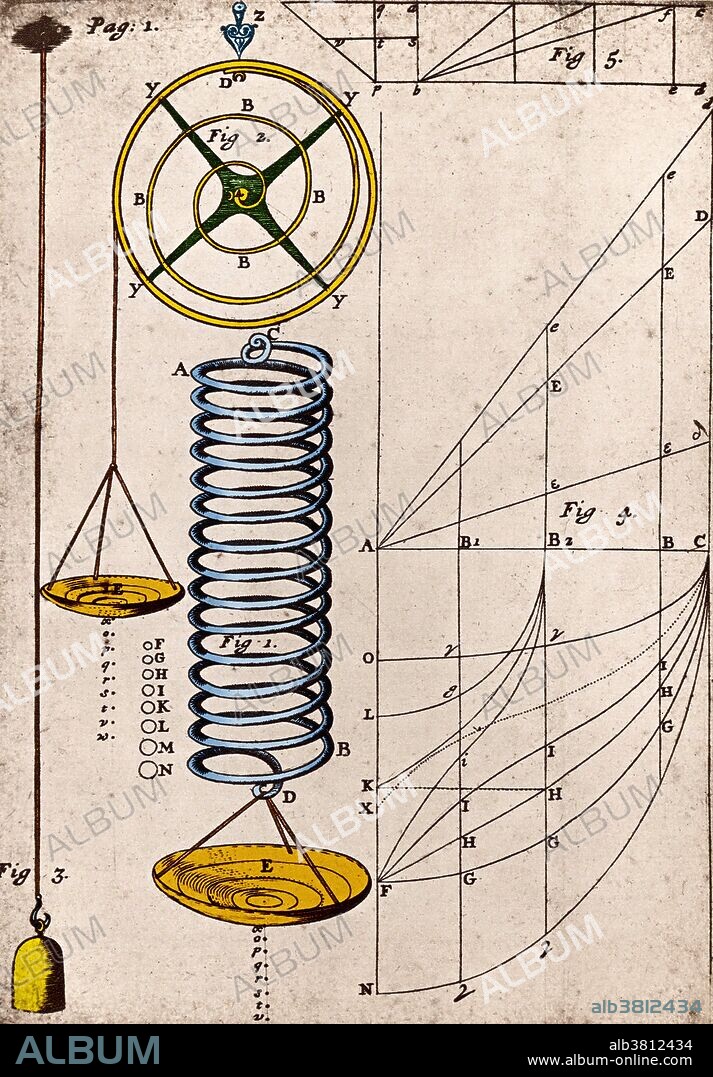alb3812434
Hooke's Law, Principle of Physics, 1678

|
Añadir a otro lightbox |
|
Añadir a otro lightbox |



¿Ya tienes cuenta? Iniciar sesión
¿No tienes cuenta? Regístrate
Compra esta imagen

Título:
Hooke's Law, Principle of Physics, 1678
Descripción:
Ver traducción automática
Hooke's Law, Principle of Physics, 1678. Hooke's law is a principle of physics that states that the force F needed to extend or compress a spring by some distance X is proportional to that distance. That is: F = kX, where k is a constant factor characteristic of the spring: its stiffness, and X is small compared to the total possible deformation of the spring. The law is named after 17th century English physicist Robert Hooke. He first stated the law in 1660 as a Latin anagram. He published the solution of his anagram in 1678 as: ut tensio, sic vis ("as the extension, so the force" or "the extension is proportional to the force").
Crédito:
Album / Science Source
Autorizaciones:
Modelo: No - Propiedad: No
¿Preguntas relacionadas con los derechos?
¿Preguntas relacionadas con los derechos?
Tamaño imagen:
2406 x 3455 px | 23.8 MB
Tamaño impresión:
20.4 x 29.3 cm | 8.0 x 11.5 in (300 dpi)
Palabras clave:
ARTE • CIENCIA • COLOREADA • DIAGRAMA • DIBUJO • FAMOSO • FÍSICA (CIENCIA) • HISTORIA • HISTORICO • ILUSTRACION • IMPORTANTE • MEJORA • OBRA DE ARTE • SIGLO XVII
 Pinterest
Pinterest Twitter
Twitter Facebook
Facebook Copiar enlace
Copiar enlace Email
Email
